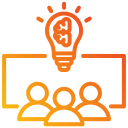
Navigating Creative Job Applications: From First Click to Final Offer
Chosen theme: Navigating Creative Job Applications. Step into a friendly, practical guide full of stories, tactics, and confidence-boosting nudges to help your creative work shine—on paper, online, and in every conversation.


Build a Portfolio That Tells a Compelling Story
Select four to six projects that represent your range and depth. Lead with the strongest, remove anything outdated, and craft narratives that emphasize decisions, constraints, results, and what you learned.
Build a Portfolio That Tells a Compelling Story
Include sketches, iterations, and a few scrappy missteps to reveal your thinking. Hiring managers often remember how you handled ambiguity more than the final glossy deliverables.
Design a Resume That Balances Craft and Clarity
01
Readable Structure Over Visual Flourish
Use clear hierarchy, generous spacing, and accessible type. Keep one column for simplicity. If you experiment with layout, ensure it remains scannable for tired eyes on small screens.
02
Show Impact With Measurable Outcomes
Translate creative work into business language. Think increased activation rate, reduced bounce, faster workflow, or higher engagement. Numbers anchor your story and help teams champion your candidacy.
03
ATS-Friendly Without Losing Your Soul
Export a clean PDF and keep a simple, text-based version for applicant tracking systems. Use standard headings, relevant keywords, and avoid text embedded in images that software can’t parse.
Write Cover Letters That Spark Genuine Curiosity
Start with a brief story that ties your experience to their mission. One candidate referenced a feature they loved and shared a concise improvement idea—instant rapport without arrogance.
Reference a recent product release, brand shift, or hiring manager interview. Connect the dots to your past project where you solved a similar problem with measurable, concrete results.
Invite a short conversation about a specific challenge they face, propose a quick idea, and offer a link to a focused case study. Confident, forward motion beats generic sign-offs.



Find the Right Roles and Read Between the Lines
Translate vague bullets into concrete capabilities. If they mention cross-functional collaboration, highlight workshops, facilitation, and documentation that accelerated alignment and reduced rework across teams.
Find the Right Roles and Read Between the Lines
Short, curious conversations reveal culture and priorities faster than job boards. Ask about success metrics, common pitfalls, and first ninety days expectations to tailor your portfolio narrative.
Apply Strategically: Timing, Channels, and Thoughtful Follow-ups
Batch research, outreach, and submissions. Track roles, contacts, and next steps in a simple sheet. Momentum compounds when your process is calm, repeatable, and visible.
Apply Strategically: Timing, Channels, and Thoughtful Follow-ups
When networking, offer something useful—an insight, a tiny audit, or a relevant article—before asking for time. Reciprocity builds trust faster than any cold, high-effort request.


Interview Like a Creative Problem Solver
Use a simple arc: context, constraints, options considered, rationale, impact, and reflection. Hiring teams lean in when they understand how you navigated tradeoffs and pressure.

Home page with positioning, three standout case studies, and a simple contact path. Include a short bio that hints at your values, collaboration style, and favorite problem spaces.

Thoughtful testimonials, published talks, or contributions to design systems speak volumes. Even a small open-source component or micro-article can anchor your reputation meaningfully.

Post short teardown threads or weekly notes. A candidate I mentored landed interviews after publishing three concise case breakdowns that demonstrated clarity, humility, and consistent curiosity.
